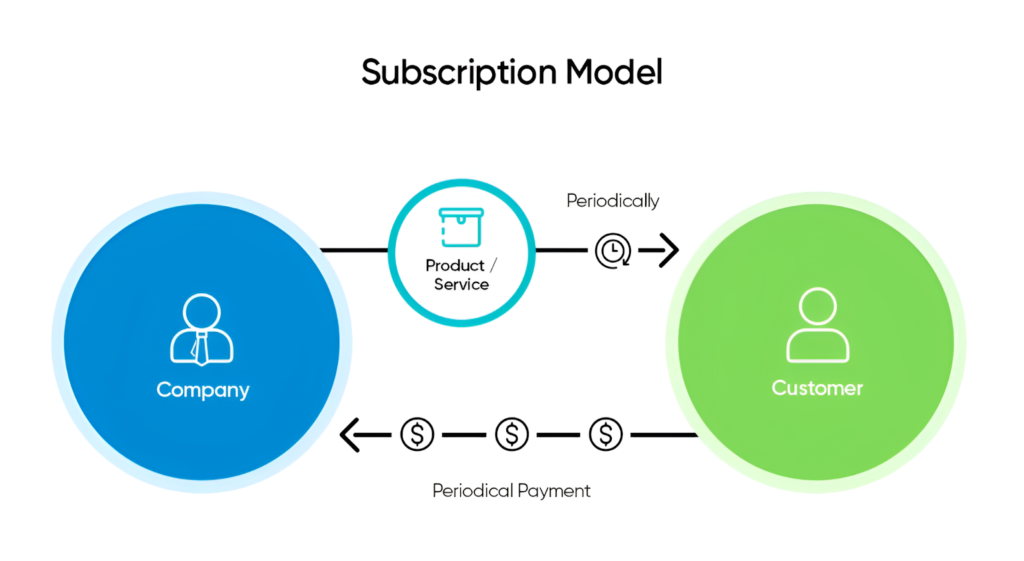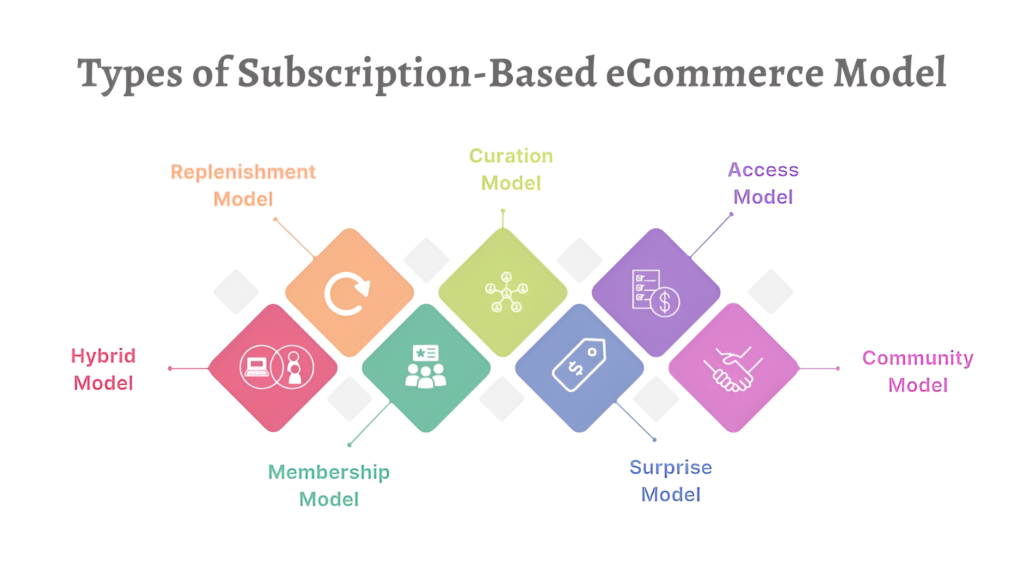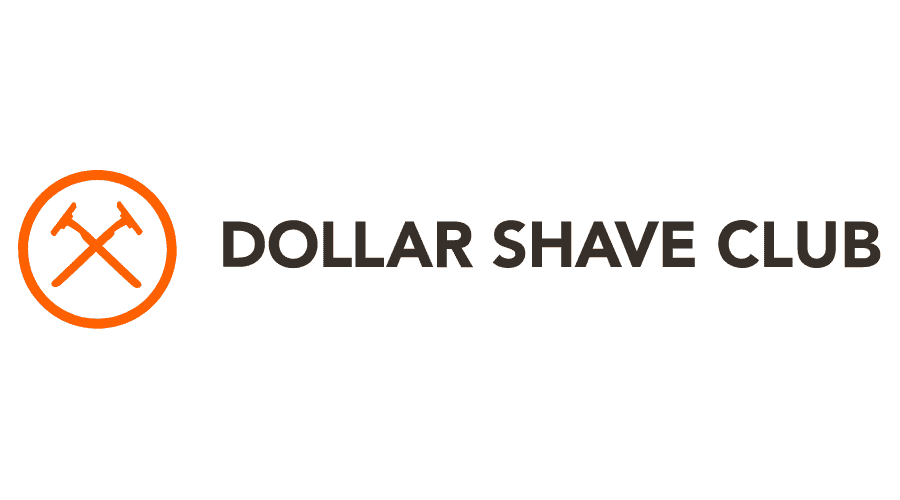Table of Contents
Introduction
A subscription business model is a revenue strategy where customers pay a recurring fee to access a product or service. This model provides continuous value and convenience to customers while ensuring a steady business revenue stream.
The idea behind a subscription-based business model is for customers to make regular payments to use a product or service, delivering ongoing value and convenience while ensuring steady revenue for businesses.
With the subscription economy expected to continue its rapid growth, businesses are better positioned to capitalize on the evolving market landscape by understanding these dynamics and key growth projections for 2024.
Benefits of Subscription Business Models

Predictable Revenue Stream
- Monthly Recurring Revenue (MRR): Subscription models provide a consistent and predictable stream of revenue through monthly recurring payments. This stability allows businesses to forecast earnings and plan for future growth.
- Financial Stability and Planning: With a steady flow of income, businesses can achieve financial stability and invest in long-term projects. This predictable revenue helps in budgeting and making informed business decisions.

Enhanced Customer Loyalty
- Building Long-Term Relationships: Subscriptions foster ongoing relationships between businesses and customers. By providing value, businesses can build trust encouraging customers to remain subscribed over extended periods.
- Increased Customer Lifetime Value (CLTV): Long-term relationships lead to higher customer lifetime value. As customers stay subscribed longer, their total contribution to the business’s revenue increases, making each customer more valuable.
Scalability and Growth
- Easier to Scale Operations: Subscription models simplify scaling operations. As the customer base grows, businesses can incrementally increase their resources and infrastructure without the need for massive overhauls.
- Flexibility in Offering New Products: Subscription businesses can easily introduce new products or services to their existing customer base. This flexibility allows for experimentation and adaptation to market demands without disrupting the core offering.
Improved Customer Insights

- Data Collection and Analysis: Continuous engagement with customers enables businesses to collect valuable data on their behaviors, preferences, and usage patterns.
- Personalized Marketing Strategies: Personalization enhances customer experience, increases satisfaction, and drives higher engagement and retention rates.
By leveraging the benefits of subscription business models, companies can achieve predictable revenue, foster customer loyalty, scale operations efficiently, and utilize data-driven strategies to enhance their overall marketing and business performance.
Types of Subscription Business Models

Product-Based Subscriptions
Examples: Bold Subscriptions, Dollar Shave Club
Benefits
- Regular Revenue: Provides a steady and predictable income stream from recurring product shipments.
- Customer Loyalty: Encourages long-term relationships with customers who receive regular deliveries.
Considerations
- Logistics and Shipping: Efficient logistics and reliable shipping are crucial for maintaining customer satisfaction.
- Inventory Management: Predicting demand and managing inventory to avoid stockouts or overstocking.
Service-Based Subscriptions
Examples: Netflix, Spotify
Benefits
- Continuous Engagement: Subscribers engage regularly with digital content, fostering habit-forming behaviors.
- High Scalability: Digital services can be scaled up to serve more customers with relatively low incremental costs.
Considerations
- Content Licensing: Costs associated with licensing or creating content can be significant.
- Competition: Staying competitive requires constant updates and unique content offerings to retain subscribers.
Membership-Based Subscriptions

Examples: Amazon Prime, Costco
Benefits
- Value-Added Perks: Memberships often come with exclusive benefits and discounts, adding perceived value.
- Increased Spend: Members tend to spend more due to the perceived value and exclusive offers.
Considerations
- Balancing Costs: Ensuring that membership fees cover the cost of benefits without eroding profit margins.
- Service Delivery: High expectations for service quality and member perks must be consistently met.
Access-Based Subscriptions
Examples: Adobe Creative Cloud, V2 Subscription
Benefits
- Continuous Access: Subscribers get ongoing access to premium tools and services, which can be updated and improved regularly.
- Recurring Revenue: Stable and predictable income from subscription fees.
Considerations
- Software Performance: Ensuring the software is reliable, secure, and frequently updated.
- Customer Support: Providing robust support to help subscribers maximize their use of the tools.
Hybrid Subscriptions
- Diversified Revenue: Combining different types of subscriptions can create multiple revenue streams.
- Enhanced Value: Offering a mix of physical products and digital services can provide greater value and convenience to customers.
- Broader Appeal: Attracts a wider audience by catering to diverse needs and preferences.
By understanding the various types of subscription business models, businesses can choose the one that best aligns with their products or services and effectively meets the needs of their target audience.
Tips for Building a Successful Subscription Business in 2024
Choosing the Right Subscription Model
- Evaluate whether your product or service is suited to a subscription model. Consider factors like the need for recurring use, the potential for creating value over time, and the ability to deliver consistently
- Determine if your offering solves ongoing problems or provides continuous benefits to customers
- Conduct market research to identify your target customers’ needs, preferences, and spending habits
- Create detailed customer personas to guide your marketing and product development efforts.
Setting Up Your Subscription Infrastructure
- Choose subscription management software that fits your business needs
- Options include Bold Subscriptions for e-commerce or Zuora for enterprise solutions
- Ensure the platform supports features like billing, analytics, customer management, and marketing automation
- Ensure your subscription platform integrates seamlessly with your existing CRM, ERP, and payment processing systems.
Pricing Strategies

- Research your competitors to understand their pricing strategies. Aim to offer competitive prices that reflect the value you provide
- Consider the costs involved in delivering your subscription service and set prices that ensure profitability
- Provide multiple subscription tiers to cater to different customer needs and budgets. Each tier should offer increasing levels of value and benefits
- Communicate the differences between tiers to help customers choose the right plan for them
Marketing and Customer Acquisition
- Leverage various digital marketing channels such as social media, email marketing, SEO, and PPC campaigns to reach potential customers
- Create engaging content that highlights the benefits of your subscription service and addresses common customer pain points
- Attract new customers by offering free trials or introductory discounts. This lowers the barrier to entry and allows potential customers to experience your service before committing
- Use these promotions strategically to convert trial users into paying subscribers.
Leveraging Technology
- Implement AI and machine learning to analyze customer data and deliver personalized experiences
- Tailored recommendations and content can increase engagement and satisfaction
- Use predictive analytics to anticipate customer needs and proactively offer relevant solutions
- Use automation tools to segment your audience, trigger personalized messages, and manage customer journeys effectively
Case Studies: Successful Subscription Businesses
Bold Subscriptions

Background and Success Story
- Bold Subscriptions is a leading subscription management software designed to help e-commerce businesses implement and manage subscription services
- It has empowered countless businesses to offer recurring products and services seamlessly
Key Strategies and Takeaways
- User-Friendly Platform: Developed a highly intuitive platform that simplifies subscription management for merchants
- Robust Integration: Ensured seamless integration with major e-commerce platforms like Shopify
- Customer Support: Provided exceptional customer support and resources, including tutorials and webinars, to help businesses succeed.
- Takeaway: Create a user-friendly platform and offer strong customer support to empower your clients.
Dollar Shave Club

Background and Success Story
- Dollar Shave Club revolutionized the razor industry by offering affordable, high-quality razors and grooming products through a subscription model
- It gained widespread popularity through its viral marketing campaigns.
Key Strategies and Takeaways
- Viral Marketing: Launched a viral video campaign that garnered millions of views and boosted brand awareness
- Simple Pricing: Implemented straightforward pricing plans that were easy for customers to understand and choose from
- Strong Brand Identity: Created a strong, relatable brand identity that resonated with its target audience
- Takeaway: Use creative marketing strategies to build brand awareness and simplify pricing to attract and retain customers
Netflix

Background and Success Story
- Netflix started as a DVD rental service and transitioned into a leading streaming platform
- It disrupted the entertainment industry with its subscription-based model and original content
Key Strategies and Takeaways
- Original Content: Invested heavily in producing original content to differentiate itself from competitors
- Data-Driven Decisions: Utilized data analytics to understand viewer preferences and tailor content accordingly
- Global Expansion: Expanded globally, adapting its content to cater to diverse audiences
- Takeaway: Invest in unique content and use data to personalize offerings and expand your market reach
Challenges and How to Overcome Them

Customer Churn
- Analyze customer data to identify patterns and reasons for cancellations
- Conduct exit surveys to gather direct feedback from departing customers
- Improve customer support and address pain points promptly
- Offer loyalty programs, discounts, or exclusive content to retain subscribers
- Regularly update and enhance your product or service based on feedback.
Scalability Issues
- Invest in scalable technology and cloud solutions to handle increased demand
- Regularly assess and upgrade your infrastructure to support growth
- Implement automation tools to streamline operations and reduce manual workload
- Train your team to manage increased demand efficiently.
Competition
- Identify your unique selling points (USPs) and highlight them in your marketing
- Focus on delivering superior customer service and building strong relationships
- Develop a clear and compelling value proposition that sets you apart from competitors
- Continuously innovate and improve your offerings to stay ahead in the market.
By examining these case studies and addressing common challenges, businesses can gain valuable insights into building and sustaining a successful subscription model.
Conclusion
Embracing a subscription business model offers numerous benefits, including predictable revenue, enhanced customer loyalty, scalability, and improved customer insights. By carefully selecting the right subscription model, setting up a robust infrastructure, implementing effective pricing strategies, leveraging digital marketing, and focusing on customer retention, businesses can thrive in the competitive landscape of 2024.
Learning from successful case studies like Bold Subscriptions, Dollar Shave Club, and Netflix, and addressing common challenges, will provide valuable insights to help you build a sustainable and successful subscription business.
Deepak Wadhwani has over 20 years experience in software/wireless technologies. He has worked with Fortune 500 companies including Intuit, ESRI, Qualcomm, Sprint, Verizon, Vodafone, Nortel, Microsoft and Oracle in over 60 countries. Deepak has worked on Internet marketing projects in San Diego, Los Angeles, Orange Country, Denver, Nashville, Kansas City, New York, San Francisco and Huntsville. Deepak has been a founder of technology Startups for one of the first Cityguides, yellow pages online and web based enterprise solutions. He is an internet marketing and technology expert & co-founder for a San Diego Internet marketing company.



